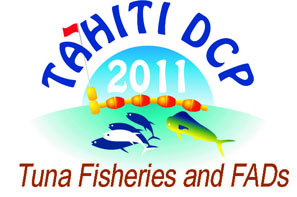 |
This conference aims to take stock of the exploitation of large pelagic fish using anchored and drifting FADs in the world.
28 Nov-2 Dec 2011 Arue (French Polynesia)
|
|
 |
This conference aims to take stock of the exploitation of large pelagic fish using anchored and drifting FADs in the world.
28 Nov-2 Dec 2011 Arue (French Polynesia)
|
|
